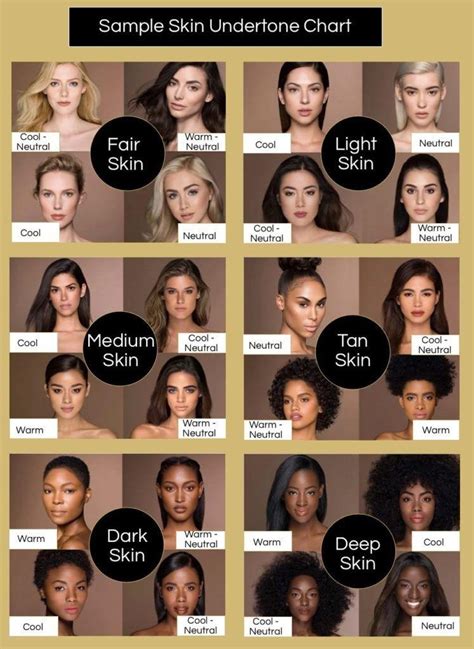Choosing the right hair color can transform your entire look, but finding the ideal shade that complements your skin tone can be a daunting task. This comprehensive guide will help you find the perfect hair color match to enhance your natural beauty and boost your confidence.

Determining Your Skin Undertone
The first step to finding the perfect hair color match is to determine your skin’s undertone. This is the subtle color that lies beneath the surface of your skin and can be either warm, cool, or neutral.
- Warm Undertone: Your skin has a golden, olive, or peachy hue.
- Cool Undertone: Your skin has a pink, bluish, or rosy tinge.
- Neutral Undertone: Your skin’s undertone is a blend of warm and cool, without any dominant color.
How to Determine Your Skin Undertone:
- Check your veins on the underside of your wrist. If they appear green, you have a warm undertone. If they appear blue or purple, you have a cool undertone. If they are a mix of both, you have a neutral undertone.
- Wear a white shirt and look in the mirror. Does your skin appear to have a yellow or golden cast? If so, you have a warm undertone. Does it appear to have a pink or bluish cast? If so, you have a cool undertone. If it appears to have no dominant color, you have a neutral undertone.
Hair Color Match for Warm Undertone
If you have a warm undertone, colors with golden, copper, or reddish tones will complement your skin. Consider these shades:
- Honey Blonde
- Caramel
- Auburn
- Copper Red
- Mahogany
Hair Color Match for Cool Undertone
If you have a cool undertone, colors with ashy, bluish, or violet tones will enhance your skin. Try these shades:
- Ash Blonde
- Silver
- Platinum Blonde
- Brunette with Blue Highlights
- Violet Red
Hair Color Match for Neutral Undertone
If you have a neutral undertone, you can experiment with a wider range of colors. However, shades with both warm and cool undertones tend to look best. Consider these options:
- Neutral Blonde
- Brown with Gold and Red Highlights
- Chocolate Brunette with Caramel Highlights
- Burgundy with Copper Highlights
- Navy Blue with Silver Highlights
Why Hair Color Match Matters
Finding the right hair color match is crucial for several reasons:
- Complements Your Skin Tone: A well-matched hair color can enhance your skin’s natural beauty and make you appear more radiant.
- Boosts Confidence: When you feel good about how you look, it shows. A flattering hair color can give you a boost of self-confidence and make you feel more attractive.
- Enhances Your Features: The right hair color can highlight your eyes, cheekbones, and other facial features, making them appear more defined and attractive.
- Reflects Your Personality: Hair color is a form of self-expression that can reflect your personality and style. Choosing a shade that aligns with your personality can make you feel more authentic and confident.
Tips and Tricks
- Consider your hair’s natural color and texture.
- Take inspiration from celebrities with similar skin tones.
- Experiment with temporary hair colors before making a permanent change.
- Consult a professional hair stylist for personalized advice.
- Maintain your hair color with regular touch-ups and avoid harsh chemicals.
FAQs
1. Can I change my hair color if I don’t know my skin undertone?
Yes, but it’s best to consult a professional hair stylist to avoid unflattering results.
2. How often should I get my hair colored?
The frequency depends on the type of hair color you choose and how fast your hair grows. Generally, touch-ups are recommended every 4-8 weeks.
3. Can I change my hair color back to its natural color?
Yes, but it can be a gradual process. Using a color remover or gradually fading the color over time can help you achieve your natural shade.
4. How can I find a hair stylist who specializes in hair color matching?
Ask for recommendations from friends or family, read online reviews, or look for stylists who have experience with color correction and personalized color matching.
5. What are some alternative hair color matching methods?
- Virtual Hair Try-On: Use online apps or websites that allow you to upload a photo and try on different hair colors virtually.
- Hue Theory: Utilize a color wheel to identify colors that complement or neutralize your skin’s undertone.
- Color Analysis: Consult with a professional who specializes in color matching and can provide personalized advice based on your skin’s undertone, hair texture, and personal preferences.
6. Can I dye my hair a color that doesn’t match my skin tone?
While it’s possible, it’s not always advisable. A mismatched hair color can make your skin appear dull or uneven.
Conclusion
Finding the perfect hair color match is a journey of self-discovery and experimentation. By understanding your skin’s undertone, considering your hair’s natural characteristics, and experimenting with different shades, you can achieve a hair color that complements your unique beauty and enhances your confidence. Remember, the right hair color is the one that makes you feel good about yourself and reflects your personality.
